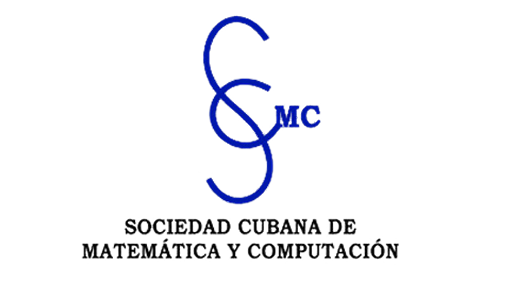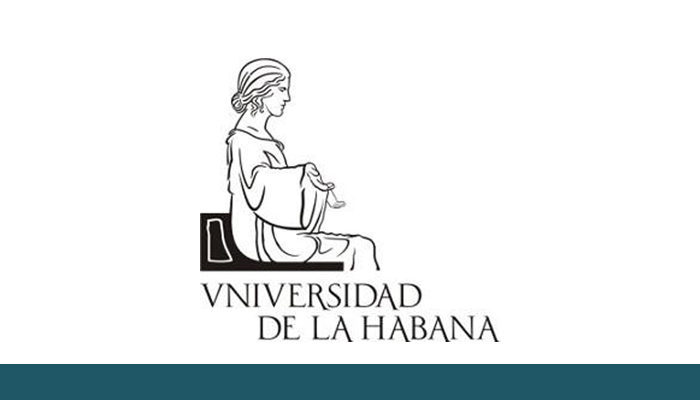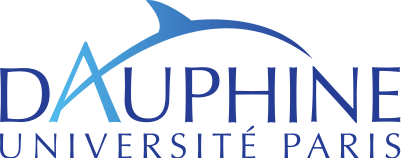Printed program
You can download a copy of the program and book of abstracts here.Schedule
Titles, abstracts and available material are below and can be accessed by clicking on the corresponding name in the schedule.First week
| Tuesday 11 | Wednesday 12 | Thursday 13 | Friday 14 | |
| 9:00 - 10:30 | Opening & registration | Roxin | Roxin | Löcherbach |
| 10:30 - 10:45 | Coffee break | Coffee break | Coffee break | |
| 10:45 - 12:15 | Rodriguez-Bunn | Rodriguez-Bunn | Rodriguez-Bunn | Roxin |
| 12:15 - 13:45 | Lunch break | Lunch break | Lunch break | Lunch break |
| 13:45 - 14:30 | Garzón | Hoffmann | Garnier | Vauchelet |
| 14:30 - 15:15 | Perasso | Gabriel | Abreu | D'Orsogna |
| 15:15 - 15:30 | Coffee break | Coffee break | Coffee break | Coffee break |
| 15:30 - 17:00 | Training sessions | Training sessions | Training sessions | Training sessions |
Second week
| Monday 17 | Tuesday 18 | Wednesday 19 | Thursday 20 | Friday 21 | |
| 9:00 - 10:30 | Löcherbach | Mouhot | Löcherbach | Mouhot | Mouhot |
| 10:30 - 10:45 | Coffee break | Coffee break | Coffee break | Coffee break | Coffee break |
| 10:45 - 11:30 | Schmeiser | Schmeiser | Bardos | Schmeiser | Sánchez |
| 11:30 - 12:15 | Castillo | ||||
| 12:15 - 13:45 | Lunch break | Lunch break | Lunch break | Lunch break | Lunch break |
| 13:45 - 14:30 | Coville | Kavian | Free | Figueroa | Guerand |
| 14:30 - 15:15 | Throm | Chevallier | Egaña | Patout | |
| 15:15 - 15:30 | Coffee break | Coffee break | Free | Coffee break | Closing |
| 15:30 - 17:00 | Training sessions | Training sessions | Training sessions |
Courses
Eva Löcherbach
University of Cergy-Pontoise, France
Modelling interacting networks as processes with variable length
(Slides available here). We will discuss a class of recently introduced models proposing to describe networks of neurons as stochastic processes with memory of variable length. These are non- Markovian processes in high or infinite dimension in which the past dependence of transition probabilities or intensities has a range that is finite but depends on the particular history. Starting from existence results, we will briefly study related mean-field models in continuous time and their large population limits. We will also discuss the relation with associated Piecewise Deterministic Markov Processes (PDMP’s) and state results concerning their longtime behavior. Finally, we will touch an important problem of statistical inference in such models: the estimation of the of the neuronal interaction graph.
My lectures will be based on joint work with Antonio Galves, Aline Duarte and Guilherme Ost.
Clément Mouhot
University of Cambridge, UK
The many-particle limit and its mathematical analysis
The short course presents a brief history of the many-particle limits introduced in statistical mechanics, an account of the main mathematical approaches for their analysis, and reviews some recent results and open problems. The effective partial differential equations (mean-field, Boltzmann-Grad) are central in astronomy, rarefied gas theory, plasma physics, and biology models.
Nancy Rodriguez-Bunn
The University of North Carolina at Chapel Hill, US
Traveling Fronts in Homogeneous and Heterogeneous Environments
Understanding the dynamics of invasive plants, signal propagation, or crime waves is very important. Reaction-diffusion equations offer a useful framework to help understand invasions. In this course we will study traveling wave solutions (modeling invasions) in homogeneous and heterogeneous environments. I will begin by motivating the study of such solutions with various applications. I will then move to present two methods to prove existence of such solutions in spatially homogeneous environments (an ODE method and a PDE method). I will conclude with a discussion of heterogenous environment with an application to blocking the propagation of crime waves.
Alexander Roxin
Centre de Recerca Matemàtica, Spain
Mean-field Theory for Networks of Spiking Neurons
Animal behavior is driven by the activity of large networks of spiking neurons. In my lectures I will discuss two distinct meanfield formalisms for describing the dynamics of such networks. On the one hand, cortical networks are characterized by sparse connectivity and highly irregular neuronal spiking. I will discuss a by now classical meanfield approach for such networks, which assumes Poisson statistics for neuronal spiking and leads to a Fokker-Planck model for the evolution of the neuronal membrane voltages. This theory can account for a number of experimental findings, including irregular spiking and firing rate heterogeneity. While this meanfield theory can be used to calculate steady states of the network and their stability, the full, nonlinear dynamics of such networks can only be characterized numerically. Recently however, a new meanfield approach was developed which provides an exact, low-dimensional description for networks of quadratic integrate-and-fire neurons. This allows one to describe the full, nonlinear response of large networks of spiking neurons using standard analytical tools. I will review this method, which is related to the exact Ott-Antonsen meanfield theory for coupled oscillators.
Christian Schmeiser
University of Vienna, Austria
Mathematical modelling of actin driven cellular morphodynamics and motility
Actin polymer filaments are the building blocks of major parts of the cytoskeleton. Typical structures are cross-linked filament networks (supporting the lamellipodium and the cell cortex) and tight filament bundles (as occurring in sarcomeres, filopodia, stress fibers, and constriction rings). These structures drive many important processes, such as the crawling motility of individual cells, muscle contraction, wound healing, and mitosis. Mathematical approaches to the modeling of actin dynamics range from descriptions of the polymerization dynamics on a molecular basis, to models of the mechanics of individual filaments described as flexible beams, and to continuum modeling of the behavior of the above mentioned structures, averaging over many filaments. The short course will give an overview of modeling, simulation, and analysis issues, reviewing also some experimental results as a motivation.
Talks
Ricardo Abreu (Universidad de Holguín, Cuba) Clifford Analysis and its applications in Linear Elasticity Theory
Solutions of the sandwich equation $\partial x u \partial x = 0$, where $\partial x$ stands for the first-order differential operator (called Dirac operator) in the Euclidean space $R^m$, are known as inframonogenic functions. These functions generalize in a natural way the theory of kernels associated with $\partial x$, the nowadays well-known monogenic functions, and can be viewed also as a refinement of the biharmonic ones. In this talk we study the connections between inframonogenic functions and the solutions of the homogeneous Lamé-Navier system in $\R^3$. Our findings allow to shed some new light on the structure of the solutions of this fundamental system in 3-dimensional elasticity theory.
Claude Bardos (Université Paris 7, France) From the d’Alembert paradox to the 1984 Kato criteria via the 1941 1/3 Kolmogorov law and the 1949 Onsager conjecture
Several of my recent contributions, with Marie Farge, Edriss Titi, Emile Wiedemann, Piotr and Agneska Gwiadza, were motivated by the following issues: The role of boundary effect in mathematical theory of fluids mechanic and the similarity, in presence of these effects, of the weak convergence in the zero viscosity limit and the statistical theory of turbulence. As a consequence, I will recall the Onsager conjecture and compare it to the issue of anomalous energy dissipation. Then I will give a proof of the local conservation of energy under convenient hypothesis in a domain with boundary and give supplementary condition that imply the global conservation of energy in a domain with boundary and the absence of anomalous energy dissipation in the zero viscosity limit of solutions of the Navier-Stokes equation in the presence of no slip boundary condition. Eventually the above results are compared with several forms of a basic theorem of Kato in the presence of a Lipschitz solution of the Euler equations and one may insist on the fact that in such case the the absence of anomalous energy dissipation is equivalent to the persistence of regularity in the zero viscosity limit. Eventually this remark contributes to the resolution of the d’Alembert Paradox.
Jorge Castillo Medina (Universidad Autónoma de Guerrero, México) Turing-Hopf patterns on dynamic surfaces
We will deal with the interaction between two bifurcations Turing and Hopf on surfaces that have isotropic growth in order to simulate a situation - phenomenon in real life.
Julien Chevallier (Université de Grenoble, France) Hawkes processes as a spike train model
A spike train is the set of firing times of a given neuron. A simple class of stochastic model we can use to describe spike trains is the class of temporal point processes, that are random sets of times. Hawkes processes have been extensively studied with application to neurosciences in mind due to their relevant, yet rather simple, way to mimic synaptic integration. A review on this model is proposed with emphasis on its several mean-field limits, showing how Hawkes processes can be viewed as the individual-based/microscopic stochastic model associated with several macroscopic deterministic models: age structured model, neural fields and monotone cyclic feedback systems. Moreover, the qualitative behaviour of these three models will be discussed
Jérôme Coville (INRA Avignon, France) Nonlocal propagation in domain with obstacle
I will present some recent results on the propagation phenomena in domain with obstacles where the dispersal process is governed by a compound Poisson process. I will briefly present the construction of generalised transition wave as well as the description of the resulting stationnary solutions.
Maria Rita D'Orsogna (California State University, US) Dynamics of neuroendocrine stress response (Slides available here)
The hypothalamic-pituitary-adrenal (HPA) axis is a neuroendocrine system that regulates numerous physiological processes. Disruptions are correlated with stress-related diseases such as PTSD and major depression. We characterize "normal" and "diseased" states of the HPA axis as basins of attraction of a dynamical system describing the main hormones regulated by the HPA axis. Our model includes hormonal self-upregulation, release, synthesis; interaction, delay and feedback mechanisms. External input is associated to psychological trauma, while parameter changes represent physiological damage. We show that transitions between the "normal" and "diseased" states may be induced solely by external input, with all physiological parameters unchanged, emphasizing the severe consequences of psychological trauma. We also find that the timing and duration of the traumatic event is an important determinant of if and how stress disorders will manifest. Finally, we propose mechanisms whereby exposure therapy may act to normalize downstream dysregulation of the HPA axis.
Giani Egaña (Universidad de la Habana, Cuba) Turing-Hopf instabilities in Keller-Segel model with glycolytic reaction
The present work classifies in the study of Keller-Segel drift-diffusion PDE system modelling the driving answer of cell populations to chemical signs, so-called chemotaxis, coupled with the glycolysis model, where glycolysis is the metabolic process through which the cell obtains energy from the glucose. We work on the two-dimensional space. We investigate the presence of Turing instabilities at the Hopf bifurcations and spatiotemporal patterns formation in the glycolysis reaction-diffusion system coupled with the Keller-Segel equation. Here we obtain positive results that depend on the values of the involved parameters.
We analyse the presence of generic Hopf bifurcations and with it the appearance of limit cycle solutions in the system of ordinary equations of glycolysis, in terms of the positive parameters. Also, we obtain an asymptotic expansion of the limit cycle. Using the R. Ricard-Mischler theorem, we analyse too the appearance of strong Turing-Hopf instabilities for the glycolysis system with diffusion in terms of the parameters, the emergence of twinkling patterns product of these diffusive instability of the limit cycle and the influence of such instabilities in the generalized parabolic-parabolic chemotaxis system in the domain.
Susely Figueroa (Université de Toulouse, France) Evolutionary dynamics for phenotypically structured populations in fluctuating environments
I will present a study about the long time behavior of a Lotka-Volterra parabolic equation by considering a time-periodic reaction term and a non-local competition. Such an equation describes the dynamics of a phenotypically structured population under the effect of mutations and selection in a fluctuating environment. We prove that the solution of this equation converges in long time to the only periodic solution of the problem that I will then describe asymptotically when the effect of the mutations vanishes. Using a theory based on Hamilton-Jacobi equations with constraint, we prove that the solution concentrates on a single Dirac mass, while the size of the population varies periodically in time. When the effect of mutations is small but non zero, these results can be compared to biological experiments, taking the growth rate in several ways. (joint work with Sepideh MIRRAHIMI)
Pierre Gabriel (Université de Versailles Saint-Quentin, France) Coupling methods for PDEs
First we will recall the standard Doeblin contraction argument and its generalization using Lyapunov functions, which allow to obtain the exponential convergence to a unique invariant measure for conservative positive semigroups. Then we will present recent extensions of the method to the non-conservative cases, that often appear in population dynamics. Each case will be illustrated by an example of application in neurosciences or cell division.
Jimmy Garnier (CNRS - Chambéry, France) Genetic diversity in age-structured populations
In many population, the behavior of individuals might differ according to their age. This structure of the population have profound influence on the dynamics of the population and in particular, on its genetic diversity. I will first investigate the inside dynamics of expanding solutions to integro--difference equations with stage--structure. I will show that the presence of the structure in the population might modify the nature of the expanding solutions at its leading edge. In particular, expanding solutions with age--structure are pushed in a local sense while in absence of age--structure those solutions are pulled. This work is in collaboration with N Marculis, R Lui and M A Lewis. In a second part, I will investigate the dynamics of the genetic diversity in metapopulations. I show that the age--structure might have profound influence on the local diversity of sub--population composing the metapopulation. This work is in collaboration with P Lafontaine.
Diego Garzón Alvarado (Universidad Nacional de Colombia, Colombia) Desarrollo de modelos computacionales en mecanobiología: aplicaciones a biología del desarrollo
En esta conferencia, mostraremos nuestros modelos matemáticos para interpretar diferentes procesos biológicos, biomecánicos y bioquímicos que son fundamentales en la formación de huesos y articulaciones. Para hacer esta descripción, utilizamos un conjunto de ecuaciones de reacción-difusión que se utilizan ampliamente en la morfogénesis, en las cuales se supone que los factores bioquímicos son secretados por células precursoras, células mesenquimáticas, condrocitos y osteoblastos, en la osificación endocondral e intramembranosa. respectivamente. La solución conduce a los llamados patrones de Turing, que representan aproximadamente estos procesos de osificación. Además, se han incluido los efectos mecánicos sobre el crecimiento y la forma en el desarrollo de las articulaciones, los centros de osificación primarios y secundarios y los huesos. Esos modelos tienen la propiedad de describir con precisión el desarrollo y la forma de los huesos y las articulaciones. En esta presentación, mostraremos el modelo y las hipótesis utilizadas para describir el desarrollo del cráneo, la clavícula, la rótula y las articulaciones de los dedos. Además, presentaremos algunas de las investigaciones que estamos haciendo sobre problemas experimentales y matemáticos en ingeniería biomédica en la Universidad Nacional de Colombia.
Jessica Guerand (University of Cambridge, UK) Quantitative regularity for parabolic De Giorgi classes
De Giorgi method is a way to prove Hölder regularity of solutions of parabolic equations. While in the elliptic case the proof is completely quantitative, in the parabolic case it seems to remain a non-quantitative step: the intermediate value lemma. The purpose of this talk is to present a quantitative version of this step after introducing how it is useful to get Hölder regularity.
Franca Hoffmann (Caltech, US) PDE models for interacting agents
Partial differential equations appear across the applied sciences and engineering to model complex real world phenomena. Especially non-linear and non-local terms pose challenges for the analysis of their solutions. We will look at different non-linear and non-local equations that model interacting particles, such as the porous medium equation for an isentropic gas, or collective behaviour models for animal groups. If one combines both non-linear and non-local terms in the same equation, advanced methods are needed to analyze their behavior. We will look at the Patlak-Keller-Segel model for bacterial chemotaxis describing how cells communicate and interact with each other, leading to more general models representing competing effects of attractive and repulsive forces.
Otared Kavian (Université de Versailles Saint-Quentin, France) Remarks on the blowing up of positive solutions to some semilinear diffusion equations
Let $\Omega \subset {\Bbb R}^N$ be a domain with $N \geq 1$ an integer and $p > 1$ a real number. We consider an initial data $u_{0} \in L^1(\Omega)$ such that $u_{0}\not\equiv 0$ and $u_{0} \geq 0$, and the solution of the semilinear diffusion equation \begin{equation}\label{eq:Diffusion} \partial_{t} u = Au + |u|^{p-1}u, \qquad u(0,x) = u_{0}(x) \geq 0. \end{equation} In the above equation the linear operator $A$ is a diffusion operator of local or non local type, for instance $$Au = \Delta u, \quad\mbox{or} \quad Au = K*u - u,$$ with a convolution kernel $K \geq 0$. In this talk we present a few results showing that, depending on the diffusion operator $A$, and on the nature of the domain $\Omega$, it may happen that, no matter how small the nonnegtaive initial data $u_{0}$ is, the solution $u(t,\cdot)$ blows in finite time when $1 < p \leq p_{*}$, for an exponent $p_{*}$ which depends on the domain $\Omega$ and the operator $A$.
Florian Patout (ENS Lyon, France) A quantitative genetics model for sexual reproduction under the regime of small variance
I will present the study of the asymptotic behavior of solutions to a quantitative genetics model with trait-dependent mortality and a nonlinear integral reproduction operator with a parameter describing the deviation between the offspring and the mean parental trait. Our asymptotic analysis encompasses the case when the parameter is typically small. We prove existence and local uniqueness of a stationary profile that get concentrated around a local optimum of mortality, with a Gaussian shape having small variance. Our approach is based on perturbative analysis techniques that require to describe accurately the correction to the Gaussian leading order profile. Our result extends previous results obtained with linear reproduction operator, but using an alternative methodology. We will also tackle the stability of these stationary profiles by looking at te associated Cauchy problem.
Antoine Perasso (Université de Besançon, France) Identifiability and stability analysis for infection-load structured epidemiological models
The goal of this talk is to present some results connected to a class of PDE epidemiological models whose infected population is structured according to an exponentially increasing infection load with respect to time. We consider in particular the question of parameter identifiability, an inverse problem that consists in assessing if the parameter to output (observation) map of the system is into, and we study the asymptotic behaviour of solutions through a global analysis of the stability and the attractivity of equilibria.
Faustino Sánchez Garduño (Universidad Nacional Autónoma de México, México) PDE and pattern formation
The emergence of patterns at different levels of organization (in living and nonliving systems) is ubiquitous in Nature. The explanation of the mechanisms from which those emerge, had been approached by using different tools. In this talk we preesent and overview of those by using a partial differential equations approach. We begin with a debate based on two schools of though: historial account vs scientific explanation. We continue with the description of a few fundamental processes in morphogenesis. Namely: reaction-diffusion and chemotaxis including their mathematical formulation and some examples as well. We conclude the talk by listing some mathematical open problems in this area.
Sebastian Throm (Universidad de Granada, Spain) Long-time behaviour for Smoluchowski's coagulation equation
Smoluchowski's coagulation equation is a mean-field model to describe systems of aggregating particles. This phenomenon is widespread in natural and industrial processes and can be observed on many different length scales (e.g. raindrops, algal growth, formation of planets). An important question for Smoluchowski's equation is how solutions behave for large times. The scaling hypothesis conjectures that the model exhibits a universal long-time behaviour which is described by self-similar profiles. In this talk, we will given an overview of the coagulation model with a particular emphasis on this problem and several recent developments.
Nicolas Vauchelet (Université Paris 13, France) Mathematical modeling of the spread of Wolbachia for dengue control.
Due to the numerous diseases that they transmit, mosquitoes is considered as the most dangerous animal species for human. In order to control the transmission of viruses some techniques consist in acting on the mosquitoes population. Among them a technique consists in using the bacteria Wolbachia. Indeed, bacteria Wolbachia has gain a lot of attention since scientists discover that infected mosquitoes with this bacteria cease to transmit some disease like dengue, chikungunya and Zika. Moreover, this bacteria is maternally transmitted from mother to offsprings. Then a strategy of control of dengue transmission consists in releasing Wolbachia infected mosquitoes in the aim to replace the wild population of mosquitoes by Wolbachia-infected mosquitoes. Obviously the safe and efficient use of such strategy relies on careful mathematical studies. In this presentation, we will focus on the spatial spread of Wolbachia infected mosquitoes into a host population. More precisely, we will address the following questions: How the spatial repartition of the releases will influence the spread of the bacteria into the population? Once the spread is initiated, is it possible that environmental characteristics stop the spread? How to optimize the success of this strategy? In order to answer to these questions, some models of partial differential equations of parabolic types will be introduced and studied with relevant mathematical tools.






